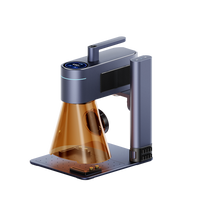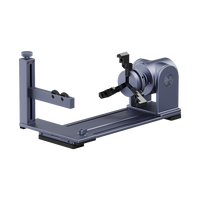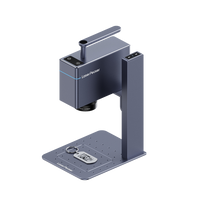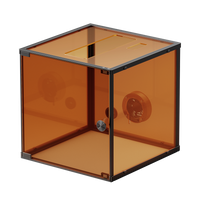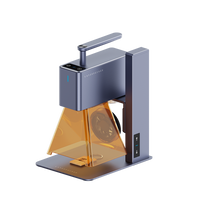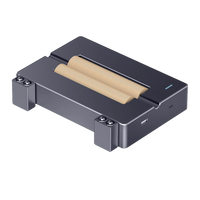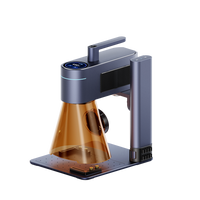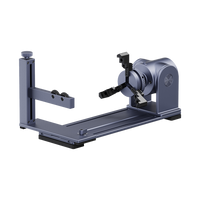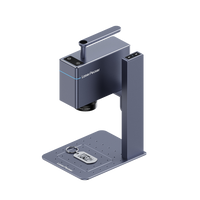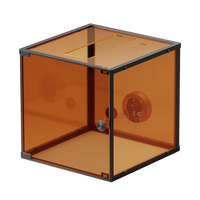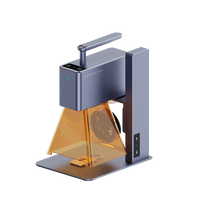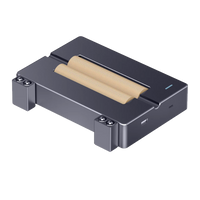Laser engraving offers a precise and elegant way to personalize Bibles, transforming them into cherished keepsakes. This guide outlines the key steps involved in engraving a Bible, from selecting the right materials to navigating the intricacies of a laser engraving machine. Whether you aim to inscribe meaningful messages, names, or intricate designs, laser engraving provides a versatile solution for adding a personal touch to your Bible.
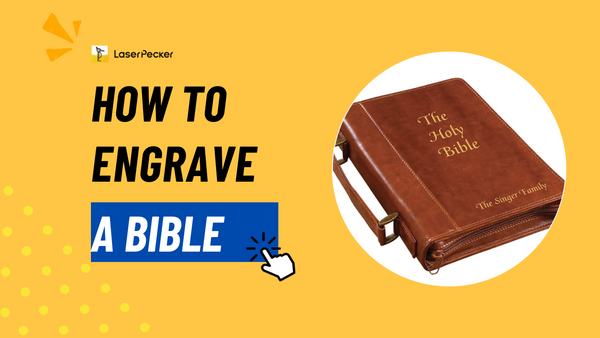
In this article:
Part 1: Common Bible Engraving Techniques
Engraving techniques have been used for centuries to create intricate and decorative designs on various materials, including metals, leather, wood, and paper. When it comes to Bible engraving, the techniques employed often depend on the material of the Bible's cover or the pages themselves. Here are some common engraving techniques:
Metal Bible Engraving:
- Hand Engraving: This traditional technique involves using a sharp tool or graver to manually cut lines into the metal surface. Skilled artisans can create detailed and precise designs.
- Machine Engraving: Modern technologies have introduced machine-based methods, such as laser engraving, which uses laser beams to etch designs onto the metal. This method allows for high precision and speed.
Leather Bible Embossing:
- Hot Stamping:In this technique, a heated metal die is pressed onto the leather surface, leaving an impression. The die may have the desired text or design, and the heat helps in creating a permanent mark.
- Debossing: This involves pressing a die into the leather to create a depressed or indented design. It is often used for a subtle and elegant look.
Bible Paper or Parchment Printing:
- Printing Press: Traditional printing methods involve using a printing press, where metal plates with raised letters or images are inked and pressed onto the paper or parchment. This technique is widely used for mass production.
- Embossed Printing: This technique involves creating a raised design on the paper or parchment. It can add a tactile and decorative element to the printed material.
Wood Bible Engraving:
- Woodcut:In woodcut engraving, the design is carved into a block of wood, and the raised portions are inked for printing. This technique has been historically used for illustrations and decorative elements.
When considering engraving for a Bible, the choice of technique depends on factors such as the material, budget, and desired level of detail. Many modern Bibles feature leather covers with hot-stamped or embossed designs, while the pages may be printed using traditional or digital methods. The choice often reflects a balance between tradition, aesthetics, and available technology.
Part 2: Where can Bible Personalization be Engraved?
Bible personalization can be engraved in various locations, including:
- Cover:Leather or metal covers can feature names, dates, or messages.
- Spine:Names or decorative elements can be engraved for identification.
- Metal Clasps/Corners:Small details or initials can be added.
- Presentation Page:Common for names, dates, and personal messages.
- Page Edges:Premium Bibles may have engraved or gilded edges.
- Inside Cover:Messages, quotes, or dedications can be added.
- Metal Plates/Insets:Designed for personalization.
- Bookmarks/Ribbons:Names or messages can be engraved.
- Gilt Lettering:Premium Bibles may offer engraved gilt sections.
Part 3: How to Laser Engrave A Bible?
Laser engraving is a precise and efficient method for personalizing Bibles. Here's a general guide on how to laser engrave a Bible:
Materials Needed:
- Laser Engraving Machine:Ensure you have access to a laser engraving machine. These machines come in various sizes and power levels; choose one suitable for your project.
- Design Software: Create or import the design you want to engrave using graphic design software. Ensure the design fits the dimensions of the Bible cover.
- Bible:Choose a Bible with a cover material suitable for laser engraving. Leather, faux leather, and certain types of coated materials are commonly used.
- Safety Equipment:Wear appropriate safety gear, such as safety glasses and, if necessary, a ventilation system to remove fumes.
Steps:
- Prepare the Design:
Use graphic design software to create or import the design you want to engrave on the Bible. Ensure the dimensions match the size of the Bible cover.
Convert the design to a format compatible with your laser engraving machine (common formats include SVG, DXF, or AI).
- Set Up the Laser Engraving Machine:
Turn on the laser engraving machine and ensure it's properly calibrated.
Adjust the laser settings, including power and speed, based on the material of the Bible cover. Test on a scrap piece of the same material if possible.
- Secure the Bible:
Secure the Bible cover in the engraving area. Use clamps or other securing mechanisms to prevent movement during the engraving process.
- Focus the Laser:
Set the correct focal length for the laser beam to ensure optimal engraving quality. Follow the manufacturer's instructions for focusing the laser.
- Preview and Align:
Use the laser engraving machine's software to preview the design on the Bible cover. Align the design to the desired position.
- Start Engraving:
Once everything is set up, start the engraving process. Monitor the machine to ensure the engraving is progressing as expected.
- Post-Processing:
After engraving is complete, carefully remove the Bible from the machine. Clean the engraved area if necessary.
- Inspect the Engraving:
Inspect the engraved design to ensure it meets your expectations. If needed, make adjustments to the design or repeat the engraving process.
Note:
- Always follow safety guidelines provided by the laser engraving machine manufacturer.
- Practice on scrap material before engraving the actual Bible to fine-tune settings and ensure the desired outcome.
- Consider consulting with professionals or experienced users if you're new to laser engraving.
Conclusion
Incorporating laser engraving into Bible personalization opens up a world of creative possibilities. The marriage of cutting-edge technology with timeless scriptures allows for unique and meaningful customization. As you embark on the journey of laser engraving a Bible, keep in mind the careful preparation, attention to detail, and adherence to safety measures. The result is not merely a personalized Bible but a testament to the intersection of craftsmanship, technology, and personal spirituality.






